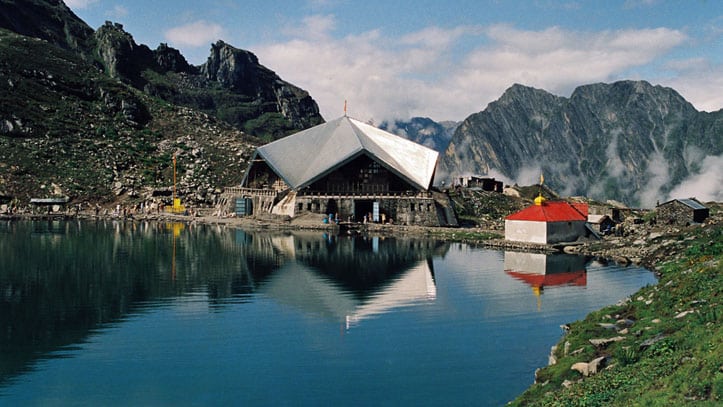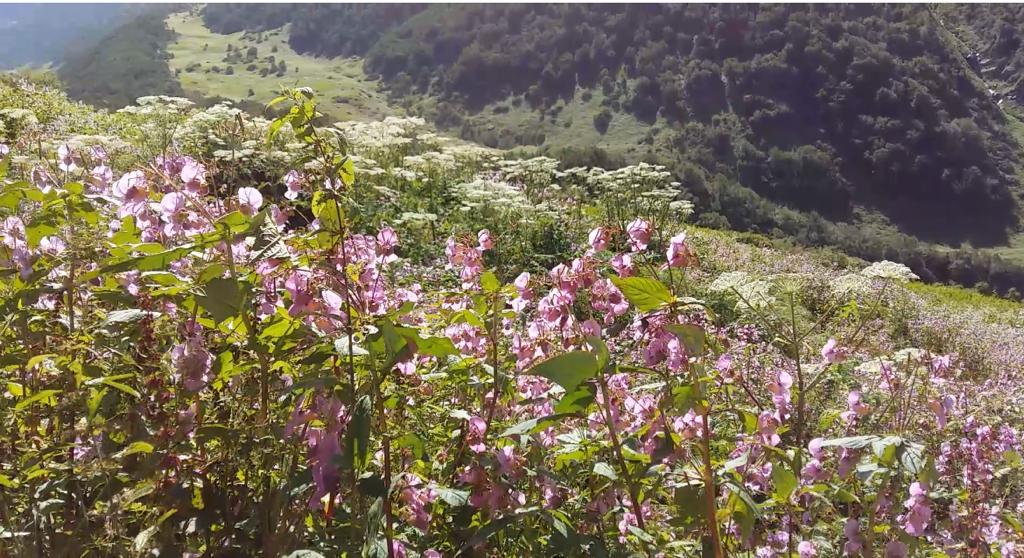
Valley of Flowers
Let’s explore Valley of Flower with Monk Travel , The Valley which is covered with en rich flowers , The charming view of Valley is proved that there is nothing beautiful than a Nature itself .
Valley is truly decorated with en rich smiling flower in the lap of Majestic Himalayas.
A Brief History about Valley
The beauty of Valley was first observed by the an Indian, but due to lack of right place to frame the beauty of Flowers, It was mention as Officially discovered by a British member Frank Smythe in 1931,but in some case it is unknown this information he got from Richard Holdsworth, Who was a botanist member of his research team , Later Frank Smythe camped in the Valley for one month to collect material for his book “The Valley of Flowers” and took with him seeds for the Botanical Gardens in Edinburgh, Scotland , there many more researcher came & It still going on.
What is Valley of Flowers?
The Valley of flowers start with the view of majestic snow covered mountains with trails of covering flower, The Valley is nearly 10 kms in Length & 2 km in width with concave in shape. The Valley is divided along its length by a small river called the Pushpawati and several tiny streams and waterfalls.
The Pushpawati joins the Laxman Ganga, flowing from Hemkund Sahib, at Ghangaria.This combined stream Retains the name Laxman Ganga till it meets Alaknanda at Govindghat.
About the Trek ?
First you need to reach a base camp destination which is Govindghat , form where you will cover 4 kms distance to Pulna Village, Pulna is starting point for trek of 10 kms toward Ghangaria.
The trek begins after crossing Alaknanda by a suspension bridge and then along a mountain path on the right bank of Laxman ganga. The trek passes through dense vegetation and whispering forests and Laxmanganga always appears to be hurrying down to meet Alaknanda down below. Then at 10 km is the Bhyundar village from where a beautiful valley branches to Kagbhushandi. The trek to Valley of Flowers continues along the Laxman Ganga and at 3km from the village, Laxmanganga has to be crossed and then begins the final zigzag climb to Ghangria.
Ghangria, nestled amidst the giant deodars, is the halting place for both Hemkund Sahib and the Valley of Flowers. Camping in the valley is not permitted, visitors have to spend the nights at Ghangria only. As the path from Ghangaria gradually ascends the Valley of Flowers, glaciers, snow bridges, alpine flowers wildlife begin to appear along this 4 km trek. At 4 km, one touches the valley and the colourful patterns lie ahead up distance of 10 kms.
Like all other National Parks, entry fee has to be paid entering in to the Valley of Mowers.
How's tough is Trekking there, Can I do?
Pulna to Ghangaria -10 Trek
Yes , If you physically fit & ok with medical fitness , you can easy to cover trek in 4-5 hrs as per your efficiency level.
Ghangaria to Valley of Flowers -4 Trek
Yes , If you physically fit & ok with medical fitness , you can easy to cover trek in 4-5 hrs as per your efficiency level , This trek is amazing with covering Lakshman Ganga , Mountains & Flowers …avoid your tiredness and refresh you by internally.
Ghangaria to Hemkund Sahib -6 Trek
Yes , If you physically fit & ok with medical fitness , you can easy to cover trek in 5-6 hrs as per your efficiency level , This trek is little steep as VOF but when you submit this , That view of Lake near Gurudwara & mountain and also view of Uttarkhand Nation Flower ( BrahmaKamal / Saussurea obvallata ) are found here only .
What kind of Flowers in the Valley ?
Some of the flowers which can be seen in this garden valley are : Pink Primula. Pedicularis, Golden Lily, creamy.
Anemones, large purple Asters, the rare white Androsace, the blue Borage, the rosy-petalled Cypripedium, blue Forget- me-nots, green and chequered Fritillaries, pink Geraniums, purple and dwarf Irises, dwarf Larkspurs, the indigo-coloured Nomocharis.
What is Nag Tal ?
The picturesque area on the left bank of Pushpawati is known as Nag Tal and is home to an extremely poisonous flower.
This poisonous flower is blue in colour, looks like the domestic dog- flower or antirhynum, and bears the botanical name of Aconitum Balfouri. It is also seen growing in far less abundance on the right bank which is the main valley. The flower is extremely attractive and the visitors have to be careful not to touch or pluck it. Due to the absence of a bridge over Laxman Ganga, visitors are unable to cross over to Nag Tal.

Sri Hemukund Sahib

This is how in one of his writings, Guru GovindSingh indicated that in one of his previous births he had meditated on the shores of a lake surrounded by seven snow-covered peaks known as ShaptaShring. In 1930, Havildar Sohan Singh was on a mission to locate this celestial lake. He was taken by the local villagers to a lake near the Valley of Flowers, then known as Lokpal.
Havildar Sohan Singh was so overwhelmed by the beauty of the lake and the images of snow peaks in the rippling waters, that he Immediately shouted “This is the Lake” referred to by Guru Govind Singh.
Sri Hemukund Sahib
Seven snow-covered peaks surround Hemkundlake and their reflection in the bluish-green water is a picture to behold.
As Guru Govind Singh is revered equally by the Sikhs and Hindus, this lake has today become a popular pilgrimage centre for both the communities.
Trek to Sri Hemukund Sahib
Ghangaria to Hemkund Sahib -6 Trek
This trek is little steep as VOF but when you submit this , That view of Lake near Gurudwara & mountain and also view of Uttarakhand Nation Flower ( BrahmaKamal / Saussurea obvallata ) are found here only .
Whilst the trek from Ghangria to the Valley of Flowers is a gradual ascent, that to Sri Hemkund Sahib is a steep climb and a pony is necessary for the elderly ones. The route is enchanting and he waters of the Laxman Ganga (Hem Ganga) in its many moods, is a constant delight to the trekkers. The Laxman Ganga descends from Hemkund Sahib and joins with the Pushpawati at Gangaria.
What is Best Time For visit ?
I have seen the valley without flowers and also with abundance of flowers and each time the valley looked beautiful as it is the garden of Gods.
Valley of Flower is open in the Middle of June month and close up to 15th September in every year.
From July till 31 August is the best time to visit Valley of flower because it is time of blooming flowers after raining in Monsoon.

What you need to carry for trek ?
- Sunglass & moisturizer or sun screen cream.
- Heavy & light woolen clothing and wind sheeter jacket & raincoat.
- Hand gloves & cap (woolen and sun cap).
- Personal medical kit.
- Umbrella and small hand bag.
How to Reach at Base Camp ( Govindghat)
- Delhi to Haridwar/ Rishikesh – 200 kms
- Rishikesh to Govindghat – 271 kms
- Govindghat – Pulna Village – 4 kms
- Pulna to Ghangaria – 10 kms Trek
- Ghangaria to VOF – 4 kms Trek
- Ghangaria to Hemkund Sahib – 6 kms trek









Leave a Reply